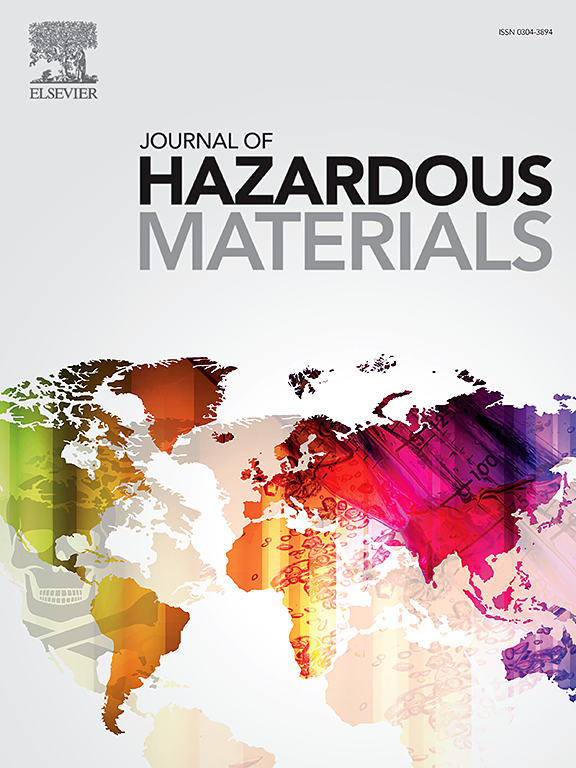Risk assessment and zoning of soil microplastics in a typical megacity, China
IF 11.3
1区 环境科学与生态学
Q1 ENGINEERING, ENVIRONMENTAL
引用次数: 0
Abstract
As emerging pollutants, microplastics (MPs) may threaten urban soil and human health. Here, we used quantitative models and geostatistical analysis to evaluate MP risks and influencing factors in Nanjing, a typical megacity in China. We also identified areas with different risk control needs. Results showed spatial variability in MP risks, with higher risks in the western region compared to the eastern region. Residential, government, and industrial areas were pollution hotspots. Factors like washing-related points of interest (POIs) and soil properties significantly influenced MP risks. Risk areas were categorized based on MP concentration and polymer risks. HRCZ-CP, the highest-risk area, distributed primarily in commercial zones and other human-dense areas heavily influenced by traffic and packaging-related POIs, requires close monitoring of anthropogenic emissions. Two secondary risk categories were identified: HRCZ-NH (high concentration risk near water) and HRCZ-H (high polymer risk in public green spaces). Future efforts should focus on controlling MP runoff in HRCZ-NH and managing soil MP retention and degradation in HRCZ-H. The clean zone (CZ), with the lowest risk, should maintain environmental standards. This study provides a basis for targeted management of urban soil MP risks.

中国典型特大城市土壤微塑料风险评估与区划
微塑料作为新兴的污染物,对城市土壤和人类健康构成威胁。本文采用定量模型和地统计学方法对中国典型特大城市南京的MP风险及其影响因素进行了评价。我们还确定了具有不同风险控制需求的领域。结果显示,MP风险存在空间差异,西部地区的风险高于东部地区。住宅、政府和工业区是污染热点。洗涤相关兴趣点(POIs)和土壤性质等因素对MP风险有显著影响。风险区域根据MP浓度和聚合物风险进行分类。HRCZ-CP是风险最高的地区,主要分布在商业区和其他受交通和包装相关的poi严重影响的人口密集地区,需要密切监测人为排放。确定了两个次级风险类别:HRCZ-NH(靠近水的高浓度风险)和HRCZ-H(公共绿地的高聚合物风险)。今后的工作应集中在控制土壤中多氯磷的径流和管理土壤中多氯磷的保留和退化。风险最低的洁净区(CZ)应保持环境标准。本研究为城市土壤MP风险的针对性管理提供了依据。
本文章由计算机程序翻译,如有差异,请以英文原文为准。
求助全文
约1分钟内获得全文
求助全文
来源期刊

Journal of Hazardous Materials
工程技术-工程:环境
CiteScore
25.40
自引率
5.90%
发文量
3059
审稿时长
58 days
期刊介绍:
The Journal of Hazardous Materials serves as a global platform for promoting cutting-edge research in the field of Environmental Science and Engineering. Our publication features a wide range of articles, including full-length research papers, review articles, and perspectives, with the aim of enhancing our understanding of the dangers and risks associated with various materials concerning public health and the environment. It is important to note that the term "environmental contaminants" refers specifically to substances that pose hazardous effects through contamination, while excluding those that do not have such impacts on the environment or human health. Moreover, we emphasize the distinction between wastes and hazardous materials in order to provide further clarity on the scope of the journal. We have a keen interest in exploring specific compounds and microbial agents that have adverse effects on the environment.
 求助内容:
求助内容: 应助结果提醒方式:
应助结果提醒方式:


